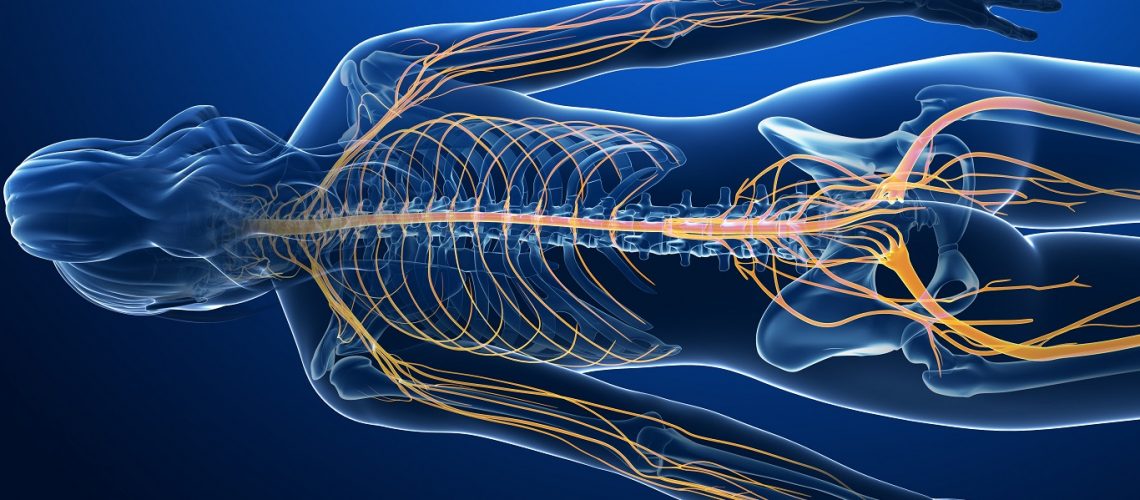Diabetes mellitus is an epidemic in the United States. The statistics for 2017 show 30.3 million people with diabetes and 84.1 million adults with prediabetes. That is a hefty 43.3% of the US population. A large part of the adult diabetic population is represented by people 65 and over. As a chronic condition, diabetes requires permanent maintenance therapy and, despite all precautions, leads to various complications.
Peripheral diabetic neuropathy is one of the most common complications podiatrists deal with in their practices. It becomes a condition of its own necessitating a complex treatment approach. It may be very challenging for practitioners to find treatment solutions these patients can adhere to when considering the age for many of the patients treated for diabetic neuropathy. That is because, in most of the cases, advanced age comes with a host of ailments that require multiple medication. Poly-medication is difficult to manage in the aged population because each medication can have a different administration schedule, route of administration, and various costs associated with them (the out of pocket expenses even when they are covered by insurances). Not to mention, more drug interactions with harder to predict side effects. All these lead to non-compliance, which leads to poor clinical outcomes.
Compounded medications for diabetic neuropathy can reduce some of these problems by incorporating more active pharmaceutical ingredients (API’s) in one transdermal cream formulation.
The following medications from various classes are usually prescribed for diabetic neuropathy:
- Neuropathic drugs – gabapentin, venlafaxine, duloxetine, amitriptyline, nortriptyline, pregabalin
- Anticonvulsants – carbamazepine, gabapentin, valproic acid
- Analgesics – capsaicin
- Narcotics – tramadol, oxycodone
- Anesthetics – lidocaine
In order to effectively control diabetic neuropathy alone, a podiatrist must prescribe two or more of the medications listed above. Many of them are oral medications with potential serious side effects and interactions with medications prescribed by other specialty doctors for other medical conditions the patients may have besides diabetes. Some of them come only as patches that may or may not cover all the affected areas, whereas others, such as opioids, can lead to other separate negative consequences when taken orally.
A compounded formulation for diabetic neuropathy may look like this:
Amitriptyline 2% / Gabapentin 10% / Baclofen 2% / Ketoprofen 10% / Nifedipine 2%
Transdermal cream #240g
Sig.: Apply 1-2g to feet TID UD
The dosage form is a transdermal cream where a base with penetrating properties incorporates all the API’s listed in the formulation.
Why is this a convenient solution for podiatry patients?
1. One compounded medication is prescribed instead of five separate ones (one for each API).
2. It drastically reduces the incidence of side effects that would occur from each individual medication if taken orally.
3. It is much more convenient and less confusing for the patient to administer – follow directions for one medication only (not five!)
4. It is cost-effective. If the patient must pay 5 copays, the sum is usually higher than the cash price for the compounded medication.
5. Adherence to one medication vs more than one can be dramatically increased. This enhances the clinical outcomes for the patient.
As the compounded medication options for diabetic neuropathy appear to be a convenient solution for podiatry patients, the next step for a podiatrist would be to select a reliable, experienced compounding pharmacy to provide the needed compounding services.
Choose HALDEY Pharmaceutical Compounding to be your trusted ally in helping your patients with customized treatment solutions.
References:
https://www.diabeteseducator.org/news/aade-blog/aade-blog-details/karen-kemmis-pt-dpt-ms-cde-faade/2017/07/26/the-2017-national-diabetes-statistics-report-is-here
https://www.cdc.gov/diabetes/data/statistics/statistics-report.html
https://www.gstatic.com/healthricherkp/pdf/diabetic_neuropathy.pdf
Lynch ME, Clark AJ, Sawynok J, Sullivan MJ. Topical 2% amitriptyline and 1% ketamine in neuropathic pain syndromes: a randomized, double-blind, placebo-controlled trial. Anesthesiology. 2005 Jul;103(1):140-6.
Barton DL, Wos EJ, et al. A double-blind, placebo-controlled trial of a topical treatment for chemotherapy-induced peripheral neuropathy: NCCTG trial N06CA. Support Care Cancer. 2011 Jun;19(6):833-41. doi: 10.1007/s00520- 010-0911-0. Epub 2010 May 25
Mazières B, Rouanet S, Guillon Y, Scarsi C, Reiner V. Topical ketoprofen patch in the treatment of tendinitis: a randomized, double blind, placebo controlled study. J Rheumatol. 2005 Aug;32(8):1563-70.
Key words: pharmaceutical compounding, compounded medication, diabetic neuropathy, compounding pharmacy




